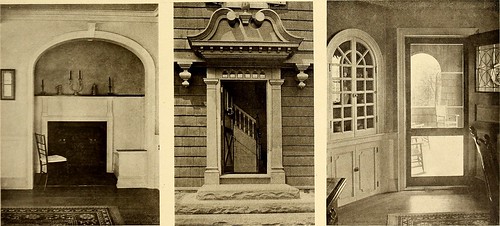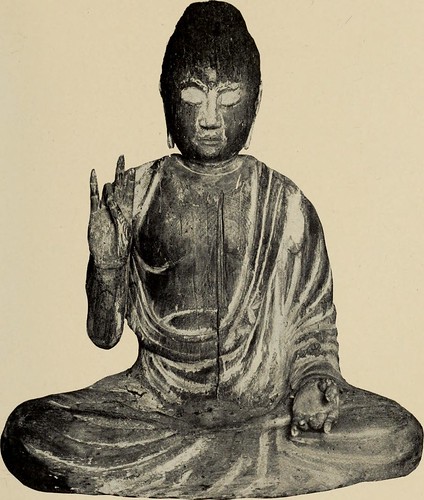(Posted from China Injection Mold blog)
A few nice china mould images I found:
Image from page 168 of “American homes and gardens” (1905)
Image by Internet Archive Book Images
Identifier: americanhomesgar41907newy
Title: American homes and gardens
Year: 1905 (1900s)
Authors:
Subjects: Architecture, Domestic Landscape gardening
Publisher: New York : Munn and Co
Contributing Library: Smithsonian Libraries
Digitizing Sponsor: Biodiversity Heritage Library
View Book Page: Book Viewer
About This Book: Catalog Entry
View All Images: All Images From Book
Click here to view book online to see this illustration in context in a browseable online version of this book.
Text Appearing Before Image:
rked: I havescarcely a piece that properly belongshere. We shall have to live up tothis house by slow degrees. Butbetter this way than to have a repre-sentative collection of historicalfurniture in a poor architectural set-ting. That is an almost hopelessanachronism because it is practicallyimpossible to do anything with thehouse, especially if the furniture beof the vintage of say 1875. Everycultivated person, nowadays, is afurniture collector who is constantlyweeding out and improving his stock.Another decided advantage thearchitect had was permission to usethe small sized lights in the loweras well as the upper half of thewindows. Not many of an archi-tects patrons will readily agree tothis, and he often had much con-cern how to gain the atmosphere sonecessary to ones happiness with the big sheets of plate glassclients have demanded. Indeed the sash bars do not obscurethe vision as is always argued, more than ones vision isobscured by the projection of the nose. One may look cross-
Text Appearing After Image:
An Artistic Inglenook in the Dining-room Hasa Paneled Seat and a Colonial Mantel A Stairway Within the Stately Doorway Isthe Feature of the Paneled Hall A Quaint China Cabinet Is Built in the Cornerof the Dining-room it, and that is a development of our own day, but with sev-eral advantages, the two piers being united by an arch in theattic. We do not expect every one, however, to note all the his-torical development which has been faithfully carried out inthis Highland Mills cottage. The orthodox details, oneafter another, will impress themselves upon the much in-terested reader, such as the overhanging upon which he willone day discover the molded chamfers which, to give themill that did the work due credit, are beautifully executed,likewise the molded drops, all very satisfactory. The ex-periments of the interior were not less successful, but are eyed, and encounter the objection, but one does not care tolook cross-eyed habitually. It all depends upon the point offocus chosen. Ther
Note About Images
Please note that these images are extracted from scanned page images that may have been digitally enhanced for readability – coloration and appearance of these illustrations may not perfectly resemble the original work.
Image from page 130 of “History of art” (1921)
Image by Internet Archive Book Images
Identifier: historyofar02faur
Title: History of art
Year: 1921 (1920s)
Authors: Faure, Elie, 1873-1937 Pach, Walter, 1883-1958
Subjects: Art
Publisher: New York and London : Harper & brothers
Contributing Library: PIMS – University of Toronto
Digitizing Sponsor: University of Toronto
View Book Page: Book Viewer
About This Book: Catalog Entry
View All Images: All Images From Book
Click here to view book online to see this illustration in context in a browseable online version of this book.
Text Appearing Before Image:
Buddhist Art. Lacquered wood. {Louvre.) concealed from Western eyes the true nature of Japan,the Occident was astonished at the speed with which entire chapter, as also all the others treating of the non-European arts, inthe volume devoted to the Middle Ages, which should be looked upon as astate of mind rather than as a historical period. It is to be observed, how-ever, that Japanese individualism tends, from the fifteenth century onward,as in the Occident, to detach itself from the religious and philosophic synthesis which characterizes the mediaeval spirit. JAPAN 103 Japan assimilated the external form of the Europeancivilizations. At a bound it covered the road that wehad taken four hundred years to travel. The Occident
Text Appearing After Image:
Buddhist Art. Buddha. Wooden statue. {Louvre.) could not understand. It thought the effort dispro-portionate to the means and destined to failure. Ittook for servile imitation the borrowing of a methodwhose practical value Japan could appreciate before 104 MEDIAEVAL ART she utilized it, because old habits of artistic and meta-physical abstraction had prepared the mind of thepeople for Western ideas. Under her new armamentof machines, of ships, and of cannons, Japan retainedthe essentials of what had constituted and what stillconstitutes her strength — her faith in herself, hercontrolled passion, her spirit of analysis and recon-struction. The reproach addressed to Europeanized Japan isnot new. She had been accused of acquiring from China—and through China from India—her religion, herphilosophy, her art, and her political institutions,whereas she had transformed everything, recast every-thing in the mold of a savagely original mind. If onewere to go back to the sources of history
Note About Images
Please note that these images are extracted from scanned page images that may have been digitally enhanced for readability – coloration and appearance of these illustrations may not perfectly resemble the original work.
Read more about Image from page 168 of "American homes and gardens" (1905)
No comments:
Post a Comment